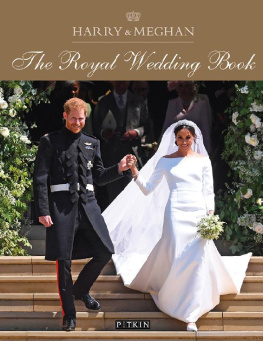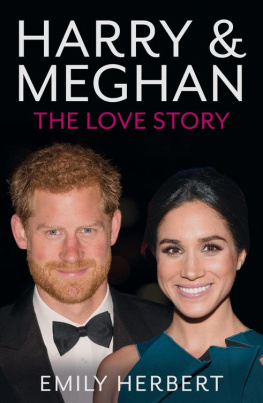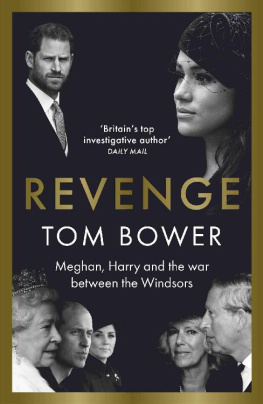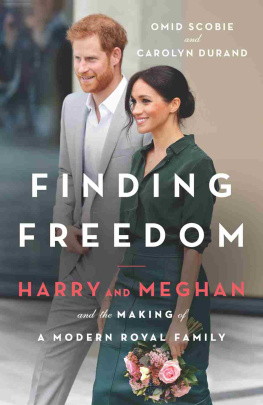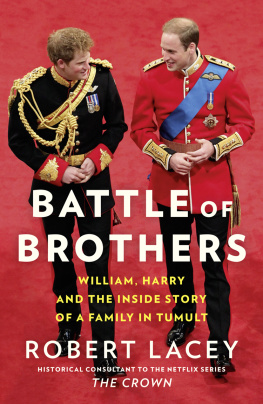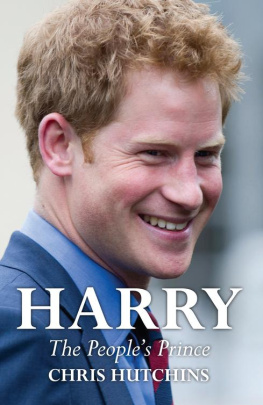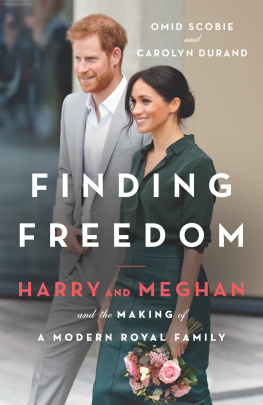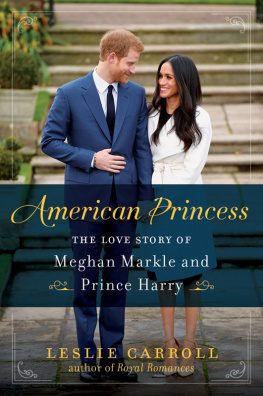Crowds cheer the happy couple on the Long Walk in Windsor during the wedding celebrations on 19 May 2018

An aerial view of Windsor Castle and the beautiful surrounding grounds. St Georges Chapel is in the forefront, where the bride and groom exchanged their vows

A new member has joined the British Royal Family, one that has been described as a breath of fresh air as the monarchy evolves with modern life in Britain. Meghan Markle is now part of a dynasty, with many members.
Although Buckingham Palace is the official residence of the Queen, it is Windsor Castle that holds a special place in her heart, and it is the home where she chooses to spend most of her time, particularly when off duty. Set overlooking the historic town of Windsor, through which runs the River Thames, and surrounded by the Great Park, the castle offers a space of tranquillity while also being conveniently located for London, just 20 miles (32km) away.
The original castle was built as a motte and bailey (i.e. a stone keep with an enclosed courtyard erected on a mound) in the 11th century after the Norman invasion by William the Conqueror, but it has been added to and altered over the centuries by the successive monarchs who have used the castle since the reign of Henry I, each stamping their own taste and era on the building. Included within its walls is St Georges Chapel, the 800-year-old church that has been the venue of numerous royal weddings over the centuries including most recently, in 2005, the marriage blessing of Harrys father Prince Charles to Camilla Parker Bowles.
Across the river from Windsor is the small town of Eton, home of the famous Eton College where Harry and his brother William had their secondary level education, attending from the age of 13. As the school is within walking distance of the castle, the two boys often crossed the river via the bridge to visit their grandmother, the Queen, to enjoy afternoon tea with her when she was in residence. These visits, along with others as a family, make Windsor a place of significance to Harry, and indeed, more recently, he and Meghan have spent a great deal of time at the castle during the 18 months leading up to their wedding.
It is perhaps no surprise that the couple have chosen to marry in Windsor. It is a beautiful location, which holds fond memories for Harry and, also now, for his bride, and it has several other advantages. The privacy of the chapel and its relatively small size allows for a more personal and tailored ceremony. Furthermore, and importantly, its proximity to the Queen and Prince Philips private residence in Windsor castle meant the journey to the church for Harrys now elderly grandparents was short and easy, and this would have been a major consideration when the choice of venue was made.
In preparation for her wedding, Meghan was baptised into the Anglican church in a private ceremony held at the Chapel Royal within St Jamess Palace and attended by Prince Charles and his wife Camilla. Meghan was brought up in a Protestant home and attended a Roman Catholic school; however, her baptism, which was followed by her confirmation, makes her a member of the Church of England, of which the Queen is the head. While not a prerequisite for her marriage in St Georges Chapel, Meghan chose to be baptised as a mark of a respect to her then future grandmother-in-law the Queen. Holy water from the River Jordan is thought to have been used for the baptism, which was carried out, at Meghans specific request, by the Archbishop of Canterbury, Justin Welby. To commemorate the special day, Meghan was seen wearing a delicate bracelet featuring a diamond cross in recognition of her baptism.
ST GEORGES CHAPEL
The beautiful St Georges Chapel situated within the boundaries of Windsor Castle has been the church of choice for many royals for weddings over the centuries. As a member of the royal family, Harry is entitled to marry at St Georges, and there have been several other royal weddings held at the chapel in recent times. In addition to the blessing of Charles and Camilla in 2005, Harrys uncle Prince Edward married Sophie Rhys-Jones in the chapel in 1999, and his cousin Peter Philips wed his Canadian wife Autumn Kelly there in 2008. In October 2018, another of Harrys cousins, Eugenie, is to marry her fianc Jack Brooksbank in the chapel. In fact, St Georges is one of the most exclusive wedding venues in the country as, in addition to the royal family, only residents of Windsor Castle and the College of St George enjoy the privilege of marrying within this impressive building.

The Invitations
Meghan and Harrys wedding invitations were printed by the company Barnard & Westwood, which has held the Royal Warrant for Printing and Bookbinding by Appointment to Her Majesty the Queen since 1985 and has a second royal warrant with Prince Charles. The invitations, featuring the Three Feather Badge of the Prince of Wales, were printed in black and gold, using American ink and English card, thereby reflecting the nationalities of the couple. A technique of burnishing was used and traditional wedding etiquette was followed with the invitations being issued by Harrys father Prince Charles. There was also a modern touch as on the listing of the couples names, the bride was referred to as Meghan, as she prefers to be known, rather than by her official first name of Rachel, and was entitled Ms instead of the more usual Miss.
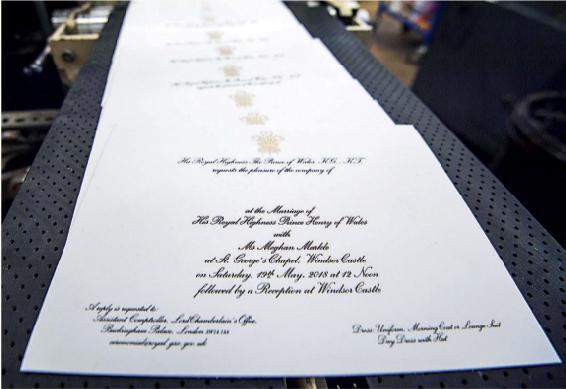
While its gothic architecture is ornate and impressive, the chapel provides an intimate atmosphere that would be more difficult to achieve in other venues, such as the grandiose Westminster Abbey or St Pauls Cathedral. The history of St Georges dates from the 13th century when a chapel was first built on the site by Henry III, although the current building was erected by Edward III in 1337 when it was linked to the newly built College of the Order of the Garter. It was expanded by Edward IV, who had deemed it to be insufficiently grand, and further improvements were carried out by Kings Henry VII and VIII. The chapel suffered great damage in the English Civil War of the mid-17th century when the 15th-century chapter house was destroyed. During this time, there was much plundering and looting of precious objects carried out by anti-monarchy forces, known as the Roundheads, who were loyal to the republican Oliver Cromwell. With Cromwells successful takeover of the country and the execution of Charles I, there followed 11 years of rule by Parliamentarians. In 1660, the monarchy was re-established under Charles II and work was started on repairing the chapel to restore it to its former glory. Some 200 years later, Queen Victoria carried out further works that included the completion of the Lady Chapel, the construction of which had been started by Henry VII only for it to be abandoned part-built. Victoria also commissioned steps to be built at the west end of the chapel to create a spectacular ceremonial entrance to the building.
In addition to its architecture, St Georges is famous for its artworks, in particular its stained-glass windows, which date from the early 16th century to modern times, and the 76 statues that represent the heraldic beasts, such as the lion of England, the dragon of Wales, the greyhound of Richmond and the falcon of York, among others. The current statues were placed on the external pinnacles in 1925 to replace the original 16th-century ones that were removed by Charles II in 1682 on the advice of the great architect Sir Christopher Wren who disliked the Reigate stone from which they had been carved.

